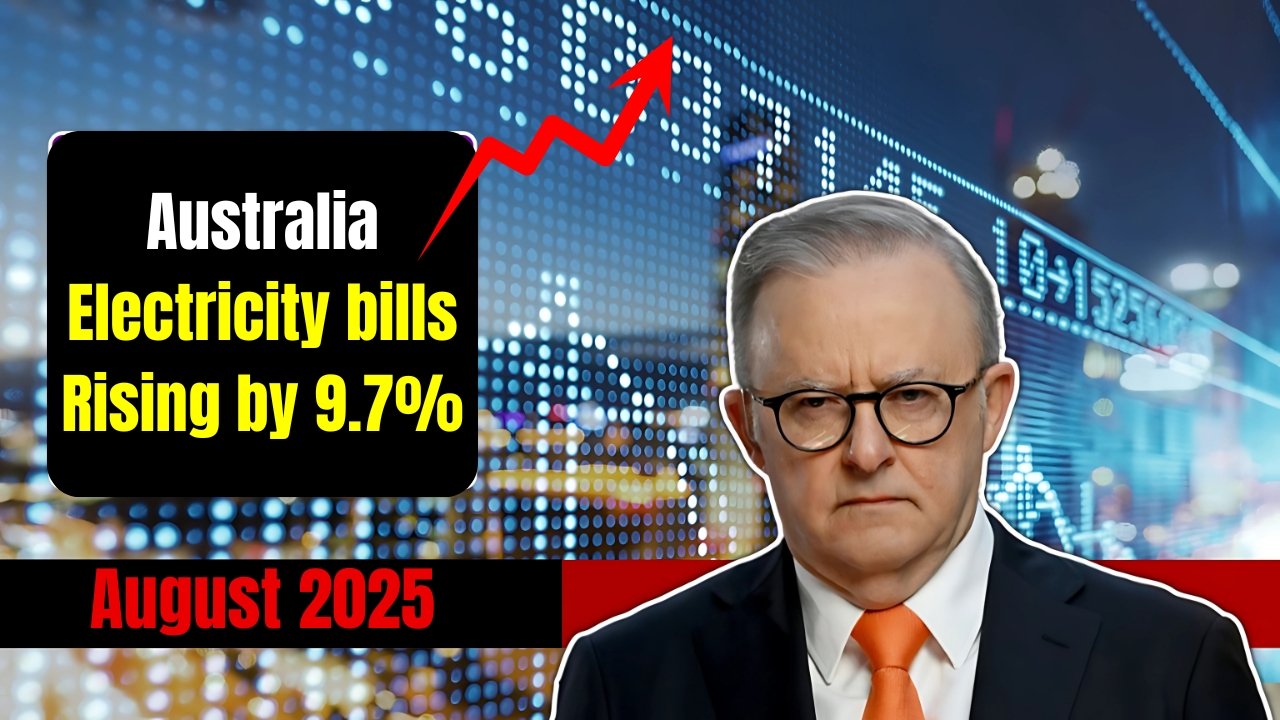
Families Get Ready for Harder Times as Power Costs Jump by Nearly 10%
Right across the nation, Australian households are bracing for big trouble on their next power bills. The energy regulator has just fired the starting gun on a shocking 9.7% surge in electricity prices, and the pain will hit families already stretched thin. The price hike is being blamed on a whole bunch of rising costs in the energy sector, and every extra dollar on a power bill cuts deeper now, when it feels like prices are already climbing everywhere.
Why the Regulator Gave the Go-Ahead for the Jump in Costs
The Australian Energy Regulator has now signed the papers, letting power companies ask for the near-10% hike. Regulators spent months poring over the numbers, trying to figure out whether families could really be forced to pay this. Higher costs for fuel, old power stations that badly need replacing, and the big bills that come from building new, cleaner energy plants all played a part in the ruling. Victorian coal is costing more, gas prices are climbing, and to replace the old plants and pay renewable energy investments, companies need to charge more—and now they will.
“While a second price rise feels unfair right now, the truth is that the costs are piling up right across our power networks,” explained market researcher Sarah Mitchell. “Finding the right price that doesn’t break wallets while still keeping the lights on is still a tricky puzzle that the entire country is grappling with.”
What This Means for Aussie Homes and Wallets
An average Aussie home that uses about 5,000 kilowatt-hours a year will see its electricity bill jump by about $215 over the next 12 months. As the hike lands when other bills are also climbing, a lot of families feel even more squeezed. The price rise, however, isn’t shared the same way everywhere. Queensland and South Australia will bear a touch more, while people in Victoria can expect a small easing, all depending on the state’s power market choices and wires.
Financial counselor James Harper puts it bluntly: “Most families have no choice now but to revisit their budgets because of the jump in power rates. For those who already squeeze every penny, suddenly adding an extra $4 every week for electricity isn’t just another line to cross—it means truly cutting back somewhere else.”
Energy Prices: What You Can’t See in the Bill
This surge in power bills isn’t a standalone shock; it sits within much bigger shifts across Australia’s entire energy landscape. Moving the grid toward renewable sources like solar and wind—correct in the long run for both the planet and your pocketbook—takes heaps of money up front. Right now, customers are the ones wearing the cost until the system can power itself more cheaply in the future.
“The journey to clean energy requires us to absorb pain now in order to save more later,” according to energy economist Dr. Emma Chen. “Australians, in effect, are the financiers while the system is modernized, even if it hurts their bills immediately.”
Analysts warn that this spike is a forerunner. As the nation shifts from coal and gas to a broader energy portfolio, future price climbs can arrive. For families already pinching the pennies, smart home energy tips and targeted relief programs will be the guarding shield against more of these surges.
Consumer Response and Adaptation Strategies
The recent announcement kicked off a surge of interest in energy-efficiency tips and putting solar on roofs. People all across Australia are starting to figure out how to shield their budgets from higher bills by trusting less on the grid and thinking of their own power generation.
“Amid the rightful anger, the spirit to act is stronger than ever,” says consumer advocate Michael Torres. “Australians are seizing their energy future, whether through tech, small daily adjustments, or by picking providers that align with their values.”
So whether you’re rereading the fridge-usage homepage or seriously eyeing that rooftop solar brochure, the climb in power prices is more than a cost—it’s a shared national conversation about the path we want to take on energy.
FAQs About the Power Price Increase
When will the new electricity rates take effect?
The 9.7% increase will kick in on October 1st and will show up on bills in the following billing period.
Are any government assistance programs available?
Eligible pensioners, veterans, and low-income households can access energy rebates through programs offered in their states.
Will all states see the same price increase?
Not exactly; the percentage varies slightly from state to state due to local market settings and infrastructure costs.
Can switching suppliers keep you from paying this hike?
Moving to the newest offer might look smart, but keep in mind that any new savings could vanish once another pricing review happens next quarter, when every company adjusts to the same big jumps in wholesale, network and fuel costs.
Australia Vehicle Registration Fee Changes October 2025 – Important Driver Updates